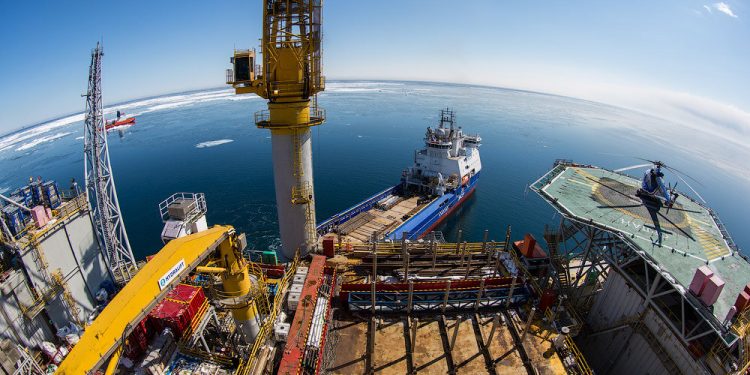Rosneft Surveyed Sakhalin-1 for Methane Emissions for the First Time in 2023
Rosneft conducted surveys at the Sakhalin-1 project facilities for the first time in 2023 as part of a comprehensive program to detect and eliminate sources of methane emissions, the company said in its sustainable development report.
The surveys were conducted both at the Odoptu and Chaivo onshore oil and gas treatment facilities and at the Berkut offshore fixed platform, the oil company clarified.
“In 2023, the implementation and scaling of a comprehensive program to detect and eliminate unorganized sources of hydrocarbon emissions (including methane) continued using unmanned aerial vehicles (UAVs) and portable ground survey devices. The program was scaled up and implemented at 27 enterprises in the Exploration and Production sector,” Rosneft reported.
“Inspections using UAVs were carried out at 13 enterprises, including hard-to-reach facilities and long sections of pipelines. The program covered 94 production facilities and about 2.5 thousand km of pipelines (a 50% increase compared to the previous period). Inspections using ground monitoring using portable systems were carried out at 25 enterprises in the reporting year, with a total of 846 facilities inspected,” the company adds.
In total, over 800 facilities at 27 production enterprises were covered by aerial and ground monitoring of methane emission sources in 2023.
In addition, Rosneft launched a project to adapt technologies for monitoring fugitive emissions of methane and other hydrocarbons to improve industrial safety at production facilities of oil refining assets. Last year, inspections were carried out at the Angarsk and Novokuibyshevsk petrochemical companies and the Novokuibyshevsk oil and additives plant. “The objective of the project is to assess the applicability of methods, technologies and the potential for scaling the program primarily for oil refining and petrochemical enterprises, and in the future, for the entire production and distribution chain,” the report explains.
As reported, at the end of 2021, the Rosneft Board of Directors approved the 2030 strategy, which envisages achieving carbon neutrality by 2050 for emissions of scopes 1 (direct greenhouse gas emissions from the company’s own sources) and 2 (indirect energy emissions associated with the purchase of electricity, heat and steam). The document provides for a reduction in methane emissions intensity to less than 0.2% by 2030. According to the company’s estimates, the specific potential of methane to affect global warming is 25 times greater than the impact of carbon dioxide.
Rosneft’s total greenhouse gas emissions for 2023, influenced by the growth of the gas factor and the growth of associated petroleum gas production, amounted to 77.15 million tons of CO2-eq., which is 7.3% more than in 2022. Methane emissions increased to 168.4 thousand tons compared to 158.8 thousand tons a year earlier.
Sakhalin-1 includes three oil and gas fields: Chayvo, Odoptu and Arkutun-Dagi on the northeastern shelf of the peninsula. Total reserves are estimated at 307 million tons of oil and 485 billion cubic meters of natural gas, with annual production of 11.3 million tons of oil.
Amid anti-Russian sanctions, the previous operator of Sakhalin-1, the American Exxon Neftegas Ltd, which owned 30%, withdrew from the project in 2022. The remaining participants retained their shares, including Rosneft (30%), Japan’s SODECO (30%) and India’s ONGC (20%). The American company’s share is planned to be sold by the end of 2024.











